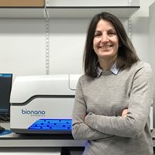The Genetic and Mechanistic Basis of Human Neurodevelopmental Disorders
A special issue of International Journal of Molecular Sciences (ISSN 1422-0067). This special issue belongs to the section "Molecular Neurobiology".
Deadline for manuscript submissions: closed (31 March 2021) | Viewed by 6240
Special Issue Editors
2. Department of Neuromuscular Disease, UCL Institute of Neurology, University College London, London, UK
Interests: neurogenetics; pediatric neurology; exome and genome sequencing; gene discovery; autism; neurodevelopmental disorders; genotype and phenotype correlation
Special Issues, Collections and Topics in MDPI journals
Interests: sequencing; technologies; neurodevelopmental disorders; genetic epilepsies; next-generation sequencing; optical genome mapping; rare diseases
Special Issues, Collections and Topics in MDPI journals
Special Issue Information
Dear Colleagues,
Neurodevelopmental disorders are a group of conditions in which the development of central nervous system is disturbed. This can include developmental brain dysfunction, which can manifest as neurological and neuropsychiatric problems during childhood, including impaired motor function, learning, language or non-verbal communication. Frequent neurological comorbidities include epilepsy, autism and movement disorders. This recent decade has witnessed significant advances in our understanding of the molecular basis underlying human neurodevelopmental disorders. Advances in DNA sequencing technologies and sequencing data analytical methods enabled us to identify the genetic aetiology in a large proportion of these disorders. Studies of model systems allowed to understand critical brain development process and to functionally characterize disease mechanisms underlying several neurodevelopmental disorders. This special issue brings together original research papers and reviews focused on neurodevelopmental disorders, including the application of iPS cells and organoids, therapy of genetic neurodevelopmental diseases, advances in gene mapping and identification, and studies in model organisms bringing novel insights into disease.
Dr. Vincenzo Salpietro
Guest Editor
Manuscript Submission Information
Manuscripts should be submitted online at www.mdpi.com by registering and logging in to this website. Once you are registered, click here to go to the submission form. Manuscripts can be submitted until the deadline. All submissions that pass pre-check are peer-reviewed. Accepted papers will be published continuously in the journal (as soon as accepted) and will be listed together on the special issue website. Research articles, review articles as well as short communications are invited. For planned papers, a title and short abstract (about 100 words) can be sent to the Editorial Office for announcement on this website.
Submitted manuscripts should not have been published previously, nor be under consideration for publication elsewhere (except conference proceedings papers). All manuscripts are thoroughly refereed through a single-blind peer-review process. A guide for authors and other relevant information for submission of manuscripts is available on the Instructions for Authors page. International Journal of Molecular Sciences is an international peer-reviewed open access semimonthly journal published by MDPI.
Please visit the Instructions for Authors page before submitting a manuscript. There is an Article Processing Charge (APC) for publication in this open access journal. For details about the APC please see here. Submitted papers should be well formatted and use good English. Authors may use MDPI's English editing service prior to publication or during author revisions.
Keywords
- Neurodevelopmental disorders genetics
- Functional studies in neurodevelopmental disorders
- Neurodevelopmental disorders cellular model systems
- Neurodevelopmental disorders gene editing
- Neurodevelopmental disorders animal models







